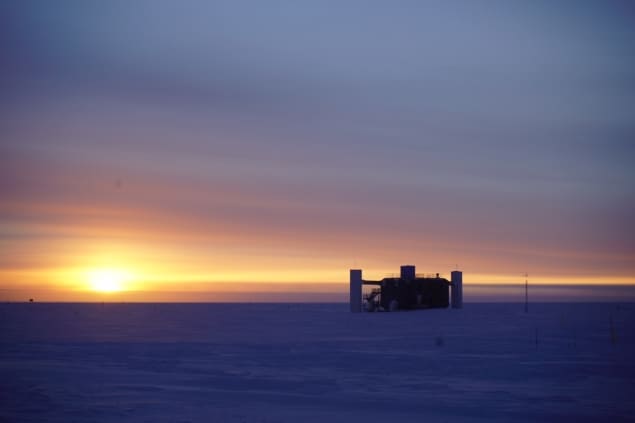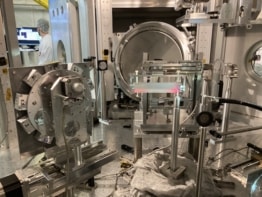
A huge observatory at the South Pole has identified four galaxies as likely sources of cosmic rays. Rather than detecting cosmic rays, the team analysed a decade’s worth of data gathered by the IceCube Neutrino Observatory to pinpoint the sources, which are expected to also emit huge numbers of neutrinos. The team says that this is the best-ever identification of cosmic ray sources.
Cosmic rays are high-energy charged particles that originate outside the solar system. They are thought to be created by violent astrophysical processes capable of accelerating particles to near the speed of light. However, working-out exactly where cosmic rays come from has proven very difficult because their trajectories are deflected by the magnetic fields permeating interstellar space. Cosmic neutrinos offer a solution because they should be produced in the same places as cosmic rays but are not deflected by magnetic fields.
IceCube comprises of strings of photomultiplier tubes that are suspended within a cubic kilometre of ice at the South Pole. Occasionally a muon neutrino will collide with an atom in the ice, creating a muon that will then emit Cherenkov light as it travels through the ice. This light is detected by the photomultipliers and the signal can be used to work-out where the neutrino came from.
Atmospheric background
Locating neutrino sources in the cosmos is not easy because the IceCube detector is swamped by signals from muons and muon neutrinos created by cosmic ray collisions with the atmosphere. These create a large and diffuse background signal and the challenge is to pick-out point sources of cosmic neutrinos within this background.

Cosmic neutrino points back to blazar driven by supermassive black hole
The IceCube team used a new data-analysis technique that could process all full-sky observations made between April 2008 and July 2018 – something that was not possible before for software-related reasons. The quasar-like galaxy NGC 1068 emerged as a particularly likely source of cosmic ray neutrinos, standing out of the background with a 2.9σ statistical significance. When combined with three other galaxies that were identified, the four sources collectively stand above the background at a statistical significance of 3.3σ.
Although this remains well short of the 5σ that is normally considered a discovery, the IceCube analysis is strongest evidence that these four galaxies are cosmic-ray emitters. The researchers now hope that their results will motivate further studies of these sources by looking for more neutrinos as well as gamma rays and X-rays – which are also associated with cosmic-ray sources.
The study is described in Physical Review Letters.



